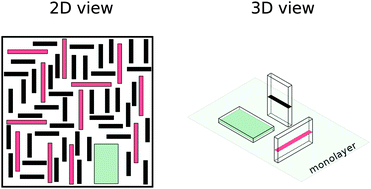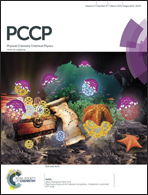Effect of shape biaxiality on the phase behavior of colloidal liquid-crystal monolayers
Abstract
We extend our previous work on monolayers of uniaxial particles [J. Chem. Phys., 2014, 140, 204906] to study the effect of particle biaxiality on the phase behavior of liquid-crystal monolayers. Particles are modelled as board-like hard bodies with three different edge lengths σ1 ≥ σ2 ≥ σ3, and the restricted-orientation approximation (Zwanzig model) is used. A density-functional formalism based on the fundamental-measure theory is used to calculate phase diagrams for a wide range of values with the largest aspect ratio κ1 = σ1/σ3 ∈ [1,100]. We find that particle biaxiality in general destabilizes the biaxial nematic phase already present in monolayers of uniaxial particles. While plate-like particles exhibit strong biaxial ordering, rod-like ones with κ1 > 21.34 exhibit reentrant uniaxial and biaxial phases. As particle geometry is changed from uniaxial- to increasingly biaxial-rod-like, the region of biaxiality is reduced, eventually ending in a critical-end point. For κ1 > 60, a density gap opens up in which the biaxial nematic phase is stable for any particle biaxiality. Regions of the phase diagram, where packing-fraction inversion occurs (i.e. packing fraction is a decreasing function of density), are found. Our results are compared with the recent experimental studies on nematic phases of magnetic nanorods.


 Please wait while we load your content...
Please wait while we load your content...